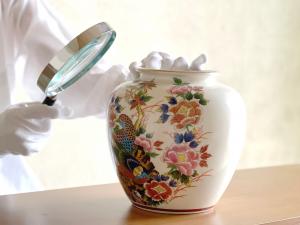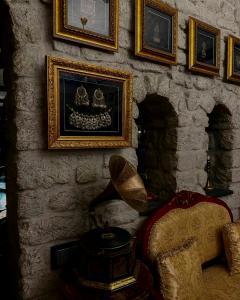Collecting with Confidence: Expert Tips for Buying and Selling Antiques and Jewelry

Expert appraisal in progress—authenticity, provenance, and condition are the cornerstones of confident collecting in antiques and fine jewelry.
Avi-Meir Zaslavsky of 999Precious Shares Insights on Making Smart, Profitable Collecting Decisions
Successful collecting blends passion with knowledge. By verifying authenticity, understanding provenance, and studying trends, collectors can make confident, rewarding decisions.”
ATLANTA, GA, UNITED STATES, October 15, 2025 /EINPresswire.com/ -- Collecting antiques and fine jewelry is a pursuit that blends passion, history, and investment strategy. Whether you are an experienced collector or just beginning to explore the world of rare pieces, buying and selling antiques and jewelry can be both rewarding and challenging. Understanding the nuances of authenticity, provenance, market value, and demand is crucial for making smart, confident decisions. Avi-Meir Zaslavsky, founder of 999Precious, provides expert guidance for collectors seeking to navigate this intricate landscape.— Avi-Meir Zaslavsky
“Collecting is as much about knowledge as it is about aesthetics,” says Avi-Meir Zaslavsky. “Before acquiring any piece, a collector must understand its history, craftsmanship, and market demand.” This approach ensures that every purchase is informed and minimizes the risk of overpaying for items that may not hold value.
Research is the foundation of confident collecting. For antiques, this includes understanding the period, style, and maker, as well as any historical significance. For jewelry, it involves assessing the quality of gemstones, the craftsmanship of settings, and the authenticity of metal content. Collectors should seek reputable reference books, attend exhibitions, and consider joining collector associations to build knowledge.
One of the most critical aspects of collecting is provenance—the documented history of ownership. Provenance not only authenticates an item but can significantly enhance its market value. “Provenance can transform an ordinary antique into a sought-after masterpiece,” explains Zaslavsky. “Collectors should always request documentation and certificates of authenticity, particularly for high-value pieces.”
In addition to documentation, collectors should also pay attention to the story behind a piece. An object linked to a notable figure, event, or workshop adds both historical and monetary value. For jewelry, knowing a piece’s designer or origin can significantly influence desirability among buyers.
Authenticity is a major concern in the antiques and jewelry markets. Counterfeit or misrepresented items can result in significant financial loss and erode confidence in collecting. Zaslavsky advises, “Always work with reputable appraisers and dealers. A professional appraisal not only verifies authenticity but also provides an accurate assessment of current market value.”
A certified appraiser can evaluate materials, craftsmanship, and historical significance. For jewelry, this includes checking gemstones for treatments or enhancements and verifying precious metal content. For antiques, appraisal may involve scientific testing, style analysis, and examination of maker marks. Collectors should seek independent appraisals rather than relying solely on sellers’ claims.
Understanding market trends is crucial when buying or selling collectibles. Certain items may gain popularity due to cultural trends, media attention, or anniversaries of historical events. “Timing can greatly impact both buying and selling decisions,” notes Zaslavsky. “A well-timed acquisition or sale can enhance returns, while poor timing can limit opportunities.”
Collectors should monitor auction results, dealer listings, and industry publications to gauge demand. Keeping abreast of emerging trends allows collectors to make informed decisions, whether seeking to acquire undervalued items or sell at peak market interest.
Developing connections with dealers, appraisers, and fellow collectors is an invaluable asset. Zaslavsky emphasizes, “Strong relationships provide access to rare items, insider knowledge, and professional advice that isn’t publicly available. Networking is a key strategy for serious collectors.”
Attending auctions, exhibitions, and collector fairs helps establish credibility and trust in the community. These interactions also provide opportunities to learn about new discoveries, pricing trends, and potential investment opportunities. Dealers often value long-term relationships with collectors, which can lead to first access to exceptional pieces.
Condition is a determining factor in both the aesthetic appeal and market value of collectibles. Pieces that are well-preserved generally command higher prices. Zaslavsky explains, “Restoration can enhance value, but it must be done carefully. Over-restoration can compromise authenticity and reduce desirability.”
Collectors should assess items for wear, repairs, or modifications that may impact value. For jewelry, this includes checking for replaced stones, refinished settings, or alterations to original designs. For antiques, it involves evaluating structural integrity, original finishes, and the presence of key features that define the piece’s historical importance.
Zaslavsky advocates for diversification: “Don’t focus solely on one type of collectible. Explore different periods, styles, and materials. A well-diversified collection balances risk and increases the potential for long-term appreciation.”
Diversification also mitigates market fluctuations. For instance, while certain antique furniture may experience slower growth, rare jewelry or limited-edition silver pieces might perform strongly. Collectors should balance personal interest with potential investment returns.
For newcomers to collecting, starting small and learning as you go is essential. Zaslavsky recommends:
1. Start with Reputable Dealers: Purchase from trusted sources with transparent histories.
2. Focus on Quality, Not Quantity: A few well-chosen pieces are more valuable than many mediocre ones.
3. Verify Documentation: Ensure provenance, certificates, and appraisals accompany purchases.
4. Educate Yourself: Study materials, craftsmanship, and market trends before investing.
5. Join Collector Communities: Networking provides insight and access to opportunities.
By following these guidelines, new collectors can gain confidence and develop a collection with both aesthetic and financial value.
Selling antiques and jewelry requires strategic planning to maximize returns. Zaslavsky advises, “Selling isn’t just about finding a buyer—it’s about positioning your piece in the right market, at the right time, and with proper presentation.”
Presentation is key. High-quality photography, detailed descriptions, and professional appraisals increase credibility and attract serious buyers. Choosing the right sales channel—whether auctions, online marketplaces, or private sales—is equally important. Each platform has unique advantages and can affect the final sale price.
Negotiation skills are critical when selling. Experienced collectors understand the art of pricing and timing, ensuring they achieve the best possible outcome without undervaluing their pieces. Zaslavsky emphasizes patience: “The right buyer may take time to appear, but waiting often results in a significantly better return.”
Collecting should be viewed as a long-term endeavor. Trends come and go, but timeless pieces with historical significance, superior craftsmanship, and verified provenance retain value over time. “Collect for passion, but invest with insight,” advises Zaslavsky. “Pieces that resonate personally and meet professional criteria will stand the test of time.”
Maintaining a disciplined approach—researching, authenticating, and networking—ensures a collection that is both personally satisfying and financially sound. Proper documentation, storage, and insurance further protect the investment, allowing collectors to enjoy their treasures with peace of mind.
Whether buying a vintage necklace, a rare silver coin, or an antique timepiece, confidence is built through knowledge, verification, and strategic action. Avi-Meir Zaslavsky concludes, “Collecting is a journey that blends passion, patience, and professionalism. Those who take the time to educate themselves, verify authenticity, and understand the market will always collect with confidence.”
By following these expert tips, collectors can navigate the complex world of antiques and jewelry with clarity, ensuring that every acquisition is a wise and rewarding choice. In a market where both aesthetic appeal and investment potential intersect, confidence and expertise are the keys to long-term success.
Avi-Meir Zaslavsky
999Precious
info@999Precious.com
Visit us on social media:
LinkedIn
Instagram
Facebook
X
Legal Disclaimer:
EIN Presswire provides this news content "as is" without warranty of any kind. We do not accept any responsibility or liability for the accuracy, content, images, videos, licenses, completeness, legality, or reliability of the information contained in this article. If you have any complaints or copyright issues related to this article, kindly contact the author above.


